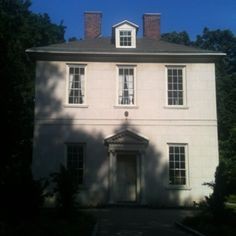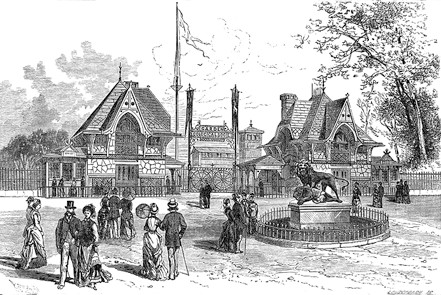Philadelphia Zoo
Introduction
Text-to-speech Audio
Images
Philadelphia Zoo - Zoo 360 Big Cat Crossing (image from Visit Philly)

Solitude House at the Philadelphia Zoo (image from Philly Zoo! Pinterest)

Solitude House in the 18th century (image from University of Pennsylvania)

Zoo gatehouse (image from Wikimedia Commons)

Historic image of the zoo gatehouse (image from Dr Physick)

Backstory and Context
Text-to-speech Audio
In addition to the animals, the riverside country home of John Penn, Jr. grandson of William Penn (who founded Pennsylvania), constructed in 1784, stood on the 42-acre property of the zoo, and still remains today. The villa, known as "The Solitude", is considered the most well-preserved and elegant example of neoclassical Philadelphia architecture. The Philadelphia Zoo was laid out in a Victorian garden style, with animal sculptures, ornate cages, formal plantings including botanical collections, and tree-lined paths. In 1928, it became the location of the first orangutan and chimpanzee births in a United States zoo, and opened the world's first children's zoo in 1957.
Today, the original gatehouses and gates still stand, and over 500 plant species are represented in the botanical collections. The zoo holds over 1,600 animals of 500 different species, and an award-winning animal trail system called Zoo 360, and draws in around 1.35 million visitors annually. Some of its features include the Rare Animal House, Penn's Woodland Trail, a pair of extremely rare white lions, the PECO Primate Reserve with 10 species of primates, the McNeil Avian Center (with walk-through habitats containing over 100 birds and the multi-sensory Migration Theater), and Big Cat Falls, featuring lions, leopards, jaguars, pumas, tigers, and more in habitats including waterfalls and pools, along with a simulated research station for young visitors. The KidZooU children's zoo is a L.E.E.D. certified indoor/outdoor petting zoo with sheep, mini-horses, goats, chickens, ducks, parakeets, an education center and playground, coral reef aquarium, and desert ant farm. Another first for the Philadelphia Zoo is its Zoo 360 animal trail system, a network of mesh-fenced pathways which allow the animals to travel beyond their enclosures to explore the zoo campus. Primates can explore the Treetop Trail while visitors watch, and tigers pass overhead at the Best Zoo Exhibit Award-winning Big Cat Crossing exhibit.
Historic Marker Inscriptions:
“America’s First Zoo”
Chartered 1859
as the Zoological Society of Philadelphia. A wildlife refuge and a zoological
garden, the zoo has long been committed to fulfilling its public mission:
conservation, research, education, recreation.
Solitude
Designed and built in 1784 as a riverside villa by
John Penn, Jr., it served as a model for country houses of the Federal period
(c. 1775 – 1830). Administered by the Philadelphia Zoo since 1874, the original
Adam Style features, including elegant plaster ceilings, are preserved.
